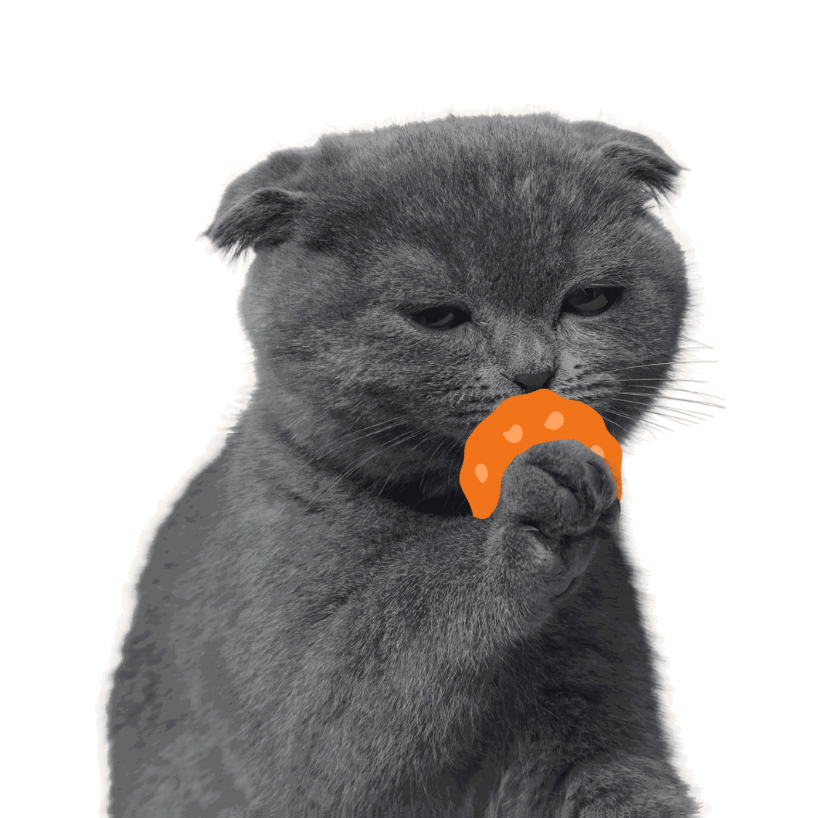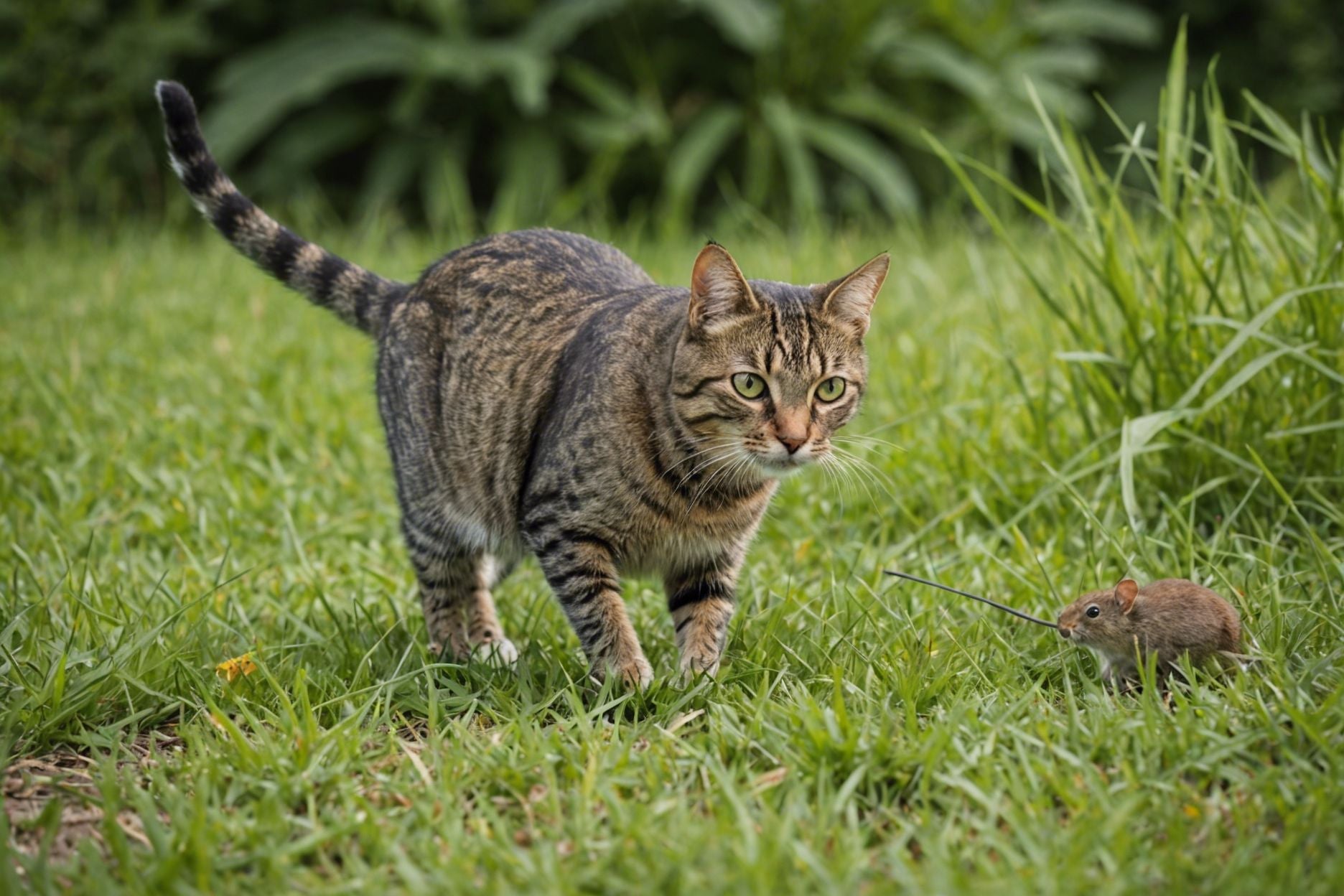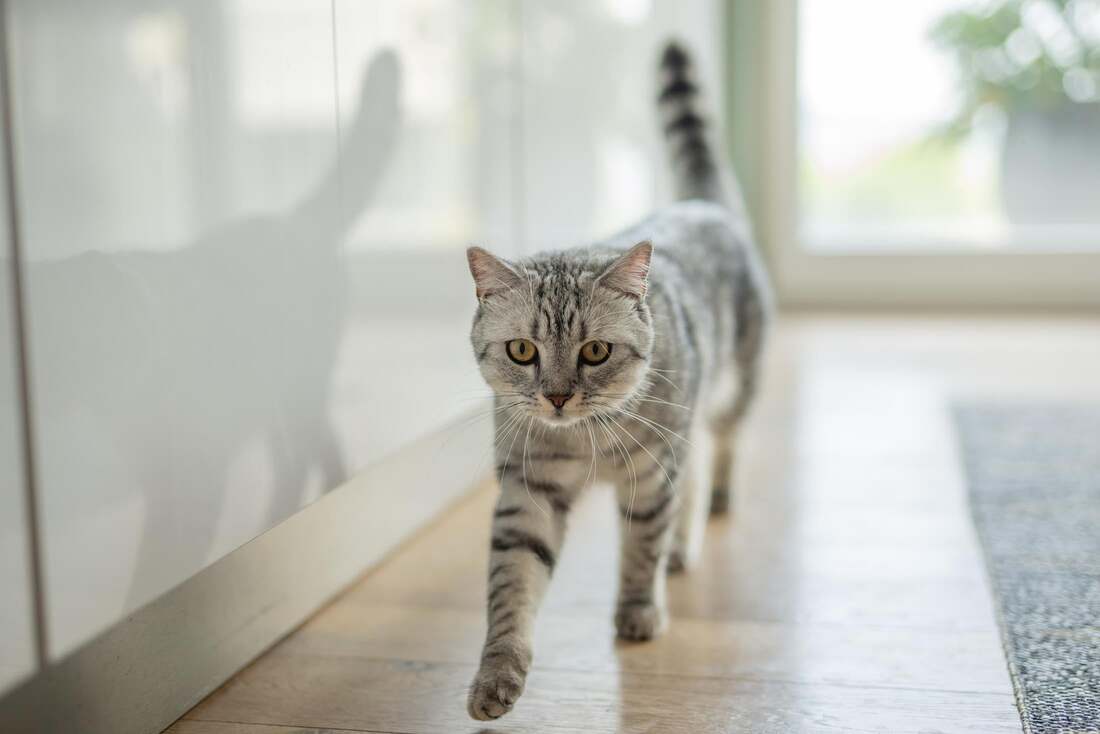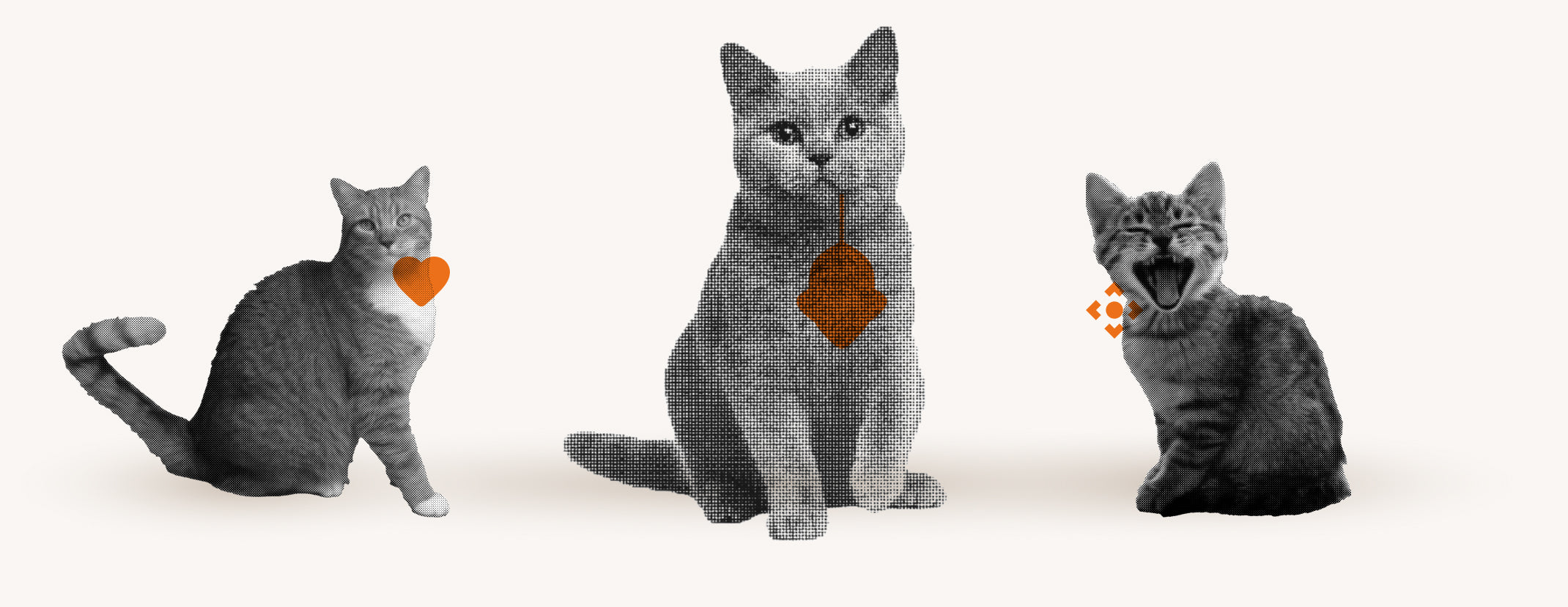Have you ever wondered what's left after your cat eats a mouse?
It's not only fascinating, but also a little disturbing when you discover the remains.
Typically, cats leave parts like the gallbladder or stomach of the mouse behind, as these are unpleasant for them to digest.
In this article you will learn more about why cats don't eat certain parts of a mouse, and we will also shed light on how you can manage your cat's mouse-eating behavior.
Why cats hunt and eat mice

Cats are natural hunters. This instinct is deeply ingrained in their DNA, and hunting mice is part of their natural behavior. When you watch a cat stalking a mouse, you're witnessing a fundamental survival instinct in action. Hunting and eating mice isn't just a food source; it also provides the cat with mental and physical stimulation.
It's important to understand that hunting is more than just finding food for cats. It's a complex activity that sharpens their senses and helps them maintain their abilities. Even if a cat is fed regularly, the urge to hunt persists. This explains why even well-fed house cats often hunt and eat mice.
How often do cats eat mice?
The frequency with which cats eat mice can vary greatly and depends on several factors:
- Access to the outside world: Cats that roam freely have more opportunities to hunt than indoor cats.
- Individual tendencies: Some cats exhibit stronger hunting behavior than others.
- Prey availability: In some environments there are more mice, which increases hunting opportunities.
The Gift: Why Cats Leave Mice on the Doorstep

When cats bring mice or other prey home, this is often not a sign of affection in the form of a gift, but rather part of their natural behavior. Experts believe that cats do this to:
- demonstrate their hunting skills ,
- They may want to show care by sharing their prey,
- and want to teach their humans how to hunt , as they see them as part of their "pack".
Health risks associated with eating mice
Eating mice is a natural behavior for cats, but it also poses health risks. Mice can be carriers of diseases such as toxoplasmosis and various types of worms, which can be transmitted to cats.
Besides diseases, there is also a risk from parasites such as tapeworms or lungworms, which can be transmitted by eating mice. These parasites can cause symptoms such as diarrhea, vomiting, or respiratory distress. It is important that cat owners are aware of these risks and take appropriate precautions.
The danger of mouse bones for cats
Mouse bones are usually not dangerous for cats, as their digestive system is designed to process them. Choking hazards from mouse bones are rare because cats expertly dismember their prey and spit out indigestible parts like fur in the form of hairballs.
Measures to take after a mouse has been eaten
If your cat has eaten a mouse, it's important to act quickly. Observe your cat closely for changes in behavior or symptoms of possible poisoning, such as vomiting or lethargy.
If you notice any symptoms or are unsure about anything, the next step is to contact a veterinarian immediately. Avoid giving your cat home remedies or inducing vomiting, as this could worsen the situation.
What's left when cats eat mice?
When cats eat mice, they often leave certain parts uneaten. This is because some organs are difficult for them to digest or have an unpleasant taste. The mouse's stomach is particularly often left behind, as it is acidic and cats dislike this taste.
Besides the stomach, cats often don't eat other organs like the gallbladder and parts of the intestinal tract . These organs can contain bitter substances that cats find unpleasant. Here are some organs that are often left behind:
- Stomach.
- Gallbladder.
- Parts of the intestine.
It is interesting to observe that despite their ability to digest many parts of a mouse, cats are selective about what they eat. This demonstrates how well cats are able to choose food that is most digestible for them. Their natural instincts allow them to select food that does not endanger their health.
Methods to prevent mice from eating each other
There are various approaches to preventing cats from eating mice. One of the most effective methods is training and managing the cat's environment. By offering alternatives such as toys that stimulate its hunting instincts, the cat's interest can be diverted from real mice.
Another method is controlling access to the outdoors. Limiting the times cats can go outside, especially during dusk or at night when mice are more active, can reduce the risk. Additionally, feeding high-quality food can help make cats less motivated to hunt for food.
The role of smart cat flaps
Smart cat flaps can be a great help in preventing cats from bringing mice into the house. These flaps are equipped with cameras and artificial intelligence that detect whether the cat has something in its mouth. If so, the flap remains closed and the prey stays outside.
Bells on the collar: A help against hunting?
Bells on a cat's collar are a popular method to prevent cats from successfully hunting. However, studies have shown that bells alone are not effective in protecting birds. Brightly colored collars appear to be more effective, increasing the cat's visibility and thus warning birds.
Discover Flappie's solutions for a prey-free home
Flappie offers an innovative solution for cat owners who want a prey-free home. The smart cat flap prevents cats from bringing prey like mice or birds into the house. This technology uses a camera and artificial intelligence to detect whether the cat is returning home alone or with prey. If prey is detected, the flap remains closed.
The advantages of the Flappie cat flap are numerous:
- Selective access control keeps unwanted prey out.
- Prey detection via AI-powered camera.
- Notifications and remote control via the Flappie app, which allows you to control the flap from anywhere and stay informed. Discover more about this smart solution at flappiedoors.com and experience how easy it can be to keep your home clean and safe.
Frequently Asked Questions
Which parts of the mouse will the cat not eat?
Cats often refuse to eat certain parts of a mouse, such as the stomach, gallbladder, and parts of the intestinal tract. These organs are difficult for cats to digest or have an unpleasant taste, as they can be sour or bitter.
Is it healthy for cats to eat mice?
Eating mice is a natural behavior for cats, but it poses health risks. Mice can carry diseases such as toxoplasmosis and various types of worms that can be transmitted to cats. There is also a risk of parasites like tapeworms or lungworms.





Share:
Cat Bell Birds: A Comprehensive Guide
How do cats kill mice? Insights into their hunting behavior